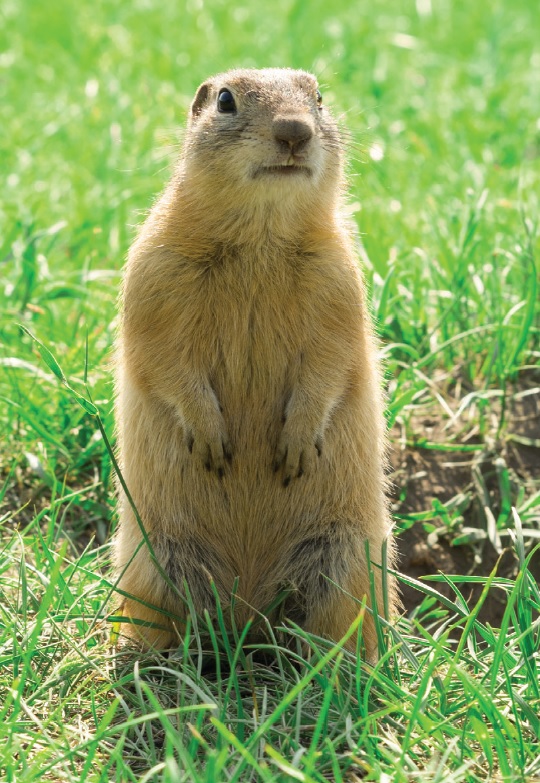Experts shadow future trends
Edward P. Salek, CAE, Executive Director | TLT Headquarters Report February 2017
An updated version of a popular STLE report burrows into the outlook for tribology and lubricants.

Unlike the groundhog, STLE members have a very good track record of predicting the future. Watch for our Emerging Trends II Report this fall.
© Can Stock Photo / kagemicrotank
FEBRUARY IS THE MONTH IN THE U.S. AND CANADA when people in many communities look to a furry rodent known as the groundhog for guidance on the weather outlook.
According to folklore, if Feb. 2 (Groundhog Day) is sunny, the groundhog will be frightened by its shadow and go back into hiding—portending six more weeks of winter. Cloudy skies mean the groundhog will not see its shadow and remain above ground to enjoy an early spring.
While this is a great legend (and also inspired the 1993 movie Groundhog Day), the creatures are generally better known for being a nuisance around farms, gardens and golf courses than a meteorological expert. However, there’s no question that STLE has access to the experts in our field that have a much better track record for prognostication than the groundhog.
That’s why work has begun on an updated version of the STLE Emerging Trends Report, which was published in 2014 and has solidified STLE’s reputation as a thought leader for the tribology and lubricants community. The original report was based on a multiphase research effort to evaluate current trends and to predict future developments impacting tribology and lubrication engineering. The research encompassed the global opinions and experiences of nearly 1,000 tribologists and lubrication engineers who participated in the project as advisors, interview and focus group participants and survey respondents.
The 80-page report is divided into nine major areas: (1.) the outlook on the field, (2.) energy, (3.) manufacturing, (4.) transportation, (5.) atomistic processes, (6.) other tribology topics, (7.) government regulation, (8.) safety and the environment and (9.) basic human needs. Copies of the 2014 version are accessible as a free download on
www.stle.org and also can be ordered off the Website in hard copy version for only $4.99.
The success of the first report and the need to update the field on new developments and trends has led STLE to create a new report in 2017. We are once again working with representatives from McKinley Advisors, the Washington, D.C.-based, association research and consulting firm that was contracted to prepare the first report. The 2017 version will be known as the STLE Emerging Trends II Report.
Changes and additions for this second edition will expand the scope and impact beyond the information delivered in the 2014 version. New features for this year’s report include:
•
More emphasis on comparative trends data (2014 versus 2017) and interpretation. Survey results will be combined with expert commentary and analysis to bring life to the data that will be collected and shared.
•
New topics, including tribology’s emerging role in biomedical engineering and other non-traditional applications.
•
Expanded international participation in data collection by working with STLE’s partner organizations in Europe, Asia and Latin America.
Target completion date is mid-2017, which will allow STLE to distribute copies and present results at the upcoming Sixth World Tribology Congress (WTC 2017) in Beijing, China, Sept. 17-22.
While the STLE Emerging Trends II Report can’t compete with the groundhog legend in terms of charm or celebrity for the four-legged savant, it will more than compensate by providing plenty of comprehensive and compelling information about the tribology and lubricants field. Watch for more details and preliminary results in late summer 2017.
 You can reach Certified Association Executive Ed Salek at esalek@stle.org
You can reach Certified Association Executive Ed Salek at esalek@stle.org.